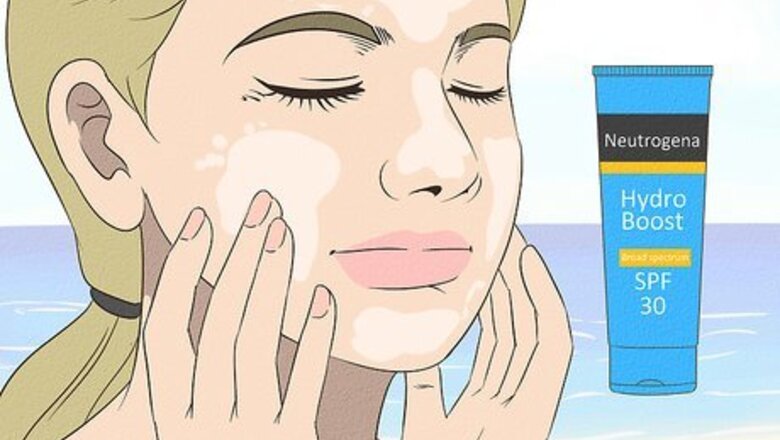
views
Preventing Sun Damage

Protect your skin against the sun. Even when it's overcast, ultraviolet A and B (UVA and UVB) rays pass directly through the clouds. Harmful UV rays from the sun can damage your porcelain complexion and cause dark marks and freckles and early signs of aging, and increase your risk of developing skin cancer. Wear sunscreen. Look for one that says "broad-spectrum," meaning it protects against both UVA and UVB rays, and make sure it has a sun protection factor (SPF) of at least 30. Reapply the sunscreen every few hours if you plan to be continuously in the sun for long stretches of time. If you go swimming, try applying sunscreen at least half an hour before you get in, so it has time to soak into your skin before you swim and doesn't just dissolve into the water. When you get out, make sure to reapply.

Avoid sunlight altogether. Sunscreen prevents most damage, but the surest way to keep your skin from wilting in the sun is to stay out of it completely. This may be impossible sometimes if you're outside, but there are many ways to cover up. Seek shade where you can find it. Look for an awning or umbrella or a bench under a tree, or retreat indoors until the sun lets up. The sun is strongest between 10 a.m. and 2 p.m. Shade may be scarce on sunny days, in which case you should either wear a hat or carry an umbrella.
Keeping Your Face Clean

Find the right cleanser for your face. Everybody's skin comes with its own special set of problems. Some is oily, some dry, some prone to blackheads, some to white. Your cleaning routine depends on your skin's particular symptoms. Cleansers can be purchased at any drug or beauty supply store. Store-bought cleaners typically combat specific symptoms. Find a cleanser that addresses your skin's needs, or find a few that work effectively together. Cleansers may come in the form of scrubs, toners, astringents or wipes. Sensitive skin requires gentle cleansers, and should not be scrubbed. Scrubbing irritated skin will aggravate it even more and prevent healing. If your skin is sensitive to certain cleansers or your acne is especially severe, you may want to see a dermatologist. They may prescribe you something or suggest a couple of cleansers that work well against your symptoms. You can also clean your face with baking soda, by dissolving it in water and massaging it into your skin, then rinsing. This helps deep clean your pores and is considerably cheaper than most facial cleansers.

Maintain your cleaning routine. You should wash your face twice daily, in the morning and at night. Neglecting your cleaning routine will lead to building up in your pores. Washing your face too frequently may dry it out. Make sure you implement moisturizing into your routine. Be consistent with your cleanser. If you alternate between too many cleansers, all of which are trying to accomplish different things, your symptoms may in fact intensify. Try implementing an electronic cleansing brush in your routine for intensive exfoliation. These are best suited for more resistant skin. If your skin is sensitive, try using a gentle setting so as not to irritate it even more.
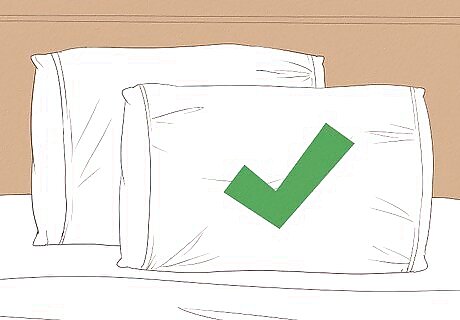
Change and wash your pillowcases frequently.
Using Facial Masks and Treatments
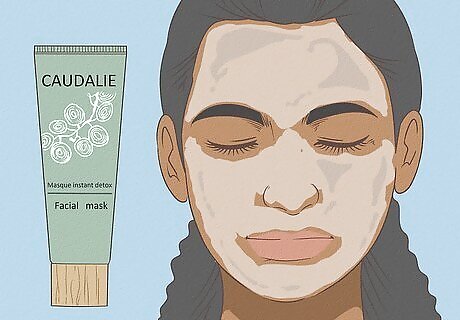
Apply facial masks to keep your skin youthful and smooth. These can be purchased at any beauty or cosmetics store, or spa. Typically you leave your facial mask on for fifteen minutes, unless otherwise specified. To remove it, just rinse with a washcloth (not your fingers!) and warm water, and finish with a splash of cold water.
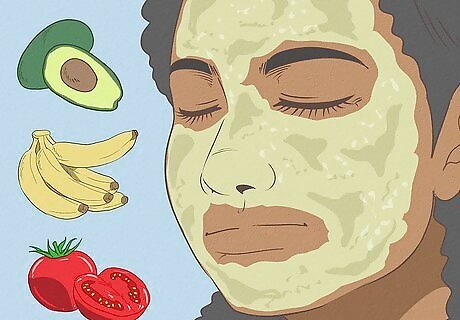
Make your own face masks at home using the following ingredients. Homemade face masks are not only more affordable but also more effective. They contain natural and fresh ingredients that are less likely to conflict with facial cleansers, including: Tomatoes: Remove the seeds and mash into a puree. Apply to the face and let it sit for fifteen minutes as your skin absorbs its antioxidants, vitamins, and nutrients. Great for hydrating dry skin and fighting acne. Add lemon and sugar to exfoliate and abolish blackheads. Avocado: These can be used alone or combined with honey and lemon. Avocado is rich in Vitamins A and E, and antioxidants and oils that help your skin retain its elasticity and smoothness. Papaya: This is similar in consistency to avocado; try blending with cream or yogurt. Pumpkin: Much like papaya, pumpkin makes a mighty moisturizer. Try blending it with cream and honey. Pineapple: Brighten and soften skin by blending pineapple with honey until smooth and applying to your face. Strawberry: Combine strawberry pulp with either honey, cream, or yogurt to achieve the right consistency. Strawberries not only hydrate skin but also help prevent and alleviate sunburn. Banana: This smooths and softens skin. Contains potassium which helps combat dark circles. It’s best when combined with honey and lemon. Try using a very ripe banana; they're much easier to mash. Lemon: Lemon is often added for its cleansing properties. It functions as a toner or astringent. Chocolate: Cocoa powder can be mixed with any number of things--yogurt, honey, milk, or even clay. Its nutrients and antioxidants help combat the effects of aging. Egg Whites: Egg white masks, mixed with a little milk and honey, are extremely effective against acne. It’s best if you leave some extra room around the eyes and mouth though, because the egg white mask gets tight as it dries out. Milk: Milk can be used in combination with other ingredients to make a mask, or by itself, simply to cleanse the face. Just dip a cotton ball in milk and gently massage against your face. This will hydrate and nourish your skin as well as clean it. Milk will also help to even out your skin tone and achieve that porcelain finish that you're looking for. Queen Elizabeth of England and Cleopatra used to take milk baths to achieve that fair and radiant complexion. Milk contains vitamins A and D which work to soften skin. Honey, yogurt and oatmeal are commonly used in combination with other ingredients.
Maintaining Healthy Skin
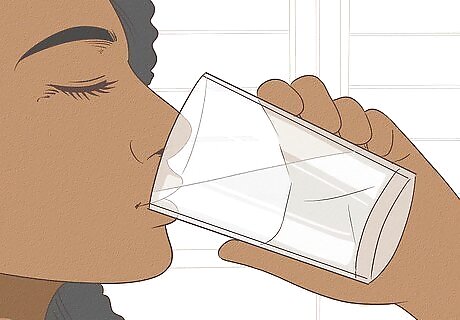
Drink lots of water. You need water circulating through your body at all times. The skin, like any organ, relies on water to flush out harmful toxins. Drinking water also helps prevent dry skin.

Drink white tea. White tea is rich in antioxidants and can be added to any other type of tea without affecting the flavor. Try to integrate white tea into your daily routine.
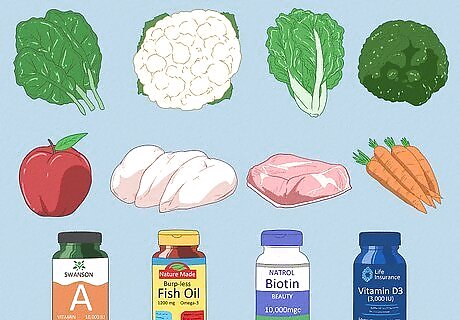
Eat healthily. Make sure your diet meets all your skin's needs and that you're getting all the necessary vitamins and nutrients.

Avoid touching your face with your fingers at all costs. If you have bangs or hair that falls into your eyes you may be tempted to push it out of the way. Be careful not to let your fingers touch your face. Touching your forehead will cause it to get oily and break out. If you wear glasses, places where the glasses rub against your skin are likely to break out. Sweat that rubs against your skin builds in your pores, and every time you touch your face to adjust your glasses, you're adding oil. You may need to wash your face more frequently if you wear glasses. Avoid scratching or picking at scabs. This will cause them to scar or leave dark spots in their wake.
Applying Makeup
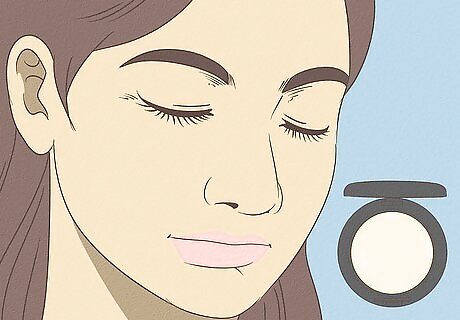
Find a powder (compact powder is probably best) that is lighter than your skin, but not too much.
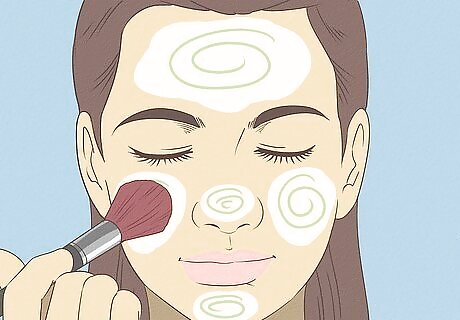
Take a round, stubby brush and apply it in circular motions on your cheeks, then on your chin, then forehead, then nose.
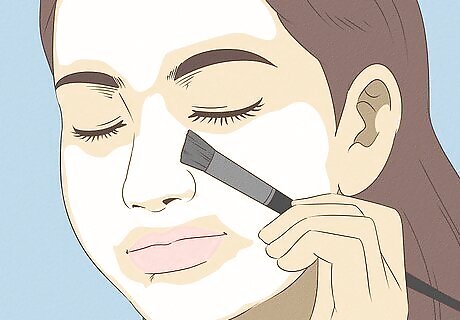
Take a smaller brush-preferably a slanted brush (one that the hairs on one side are shorter than the other side so it looks like a wedge)and connect the areas you applied the powder to with the same powder.
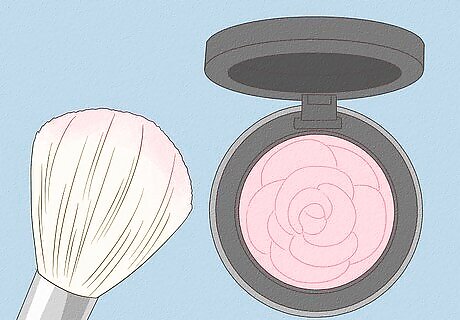
Find a blush that gives your cheeks a nice, rosy, peachy glow, but is not too noticeable. Make sure it looks natural and light.
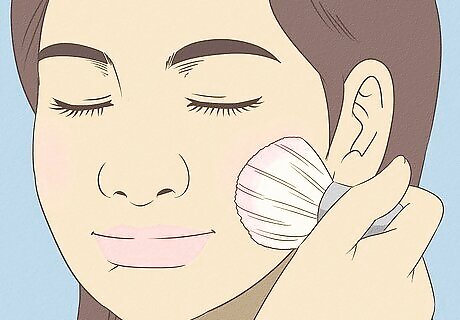
Use the 1st brush to apply blush in circular motions on your cheeks. Keep it light.
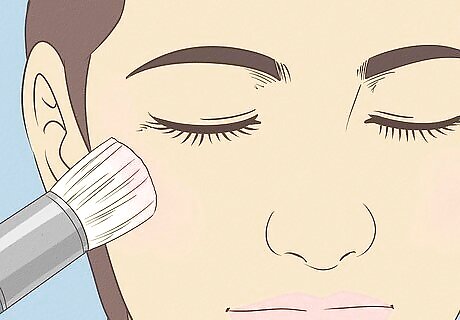
Take the second "wedge" brush and dab light blush up on your cheek bones, ending to the side of your eyes. This will make your face look slimmer and more elegant.
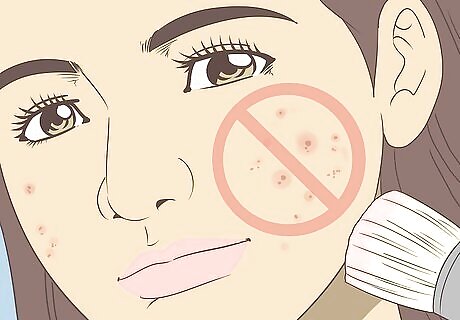
Avoid using blush if you have tiny red spots, pimples, or red skin on your cheeks. Cover up the red as much as you can with the powder. Chances are you most likely will not be able to cover it all up and your cheeks will be left with what looks like a tiny bit of natural blush.

















Comments
0 comment